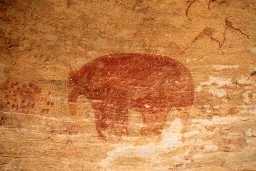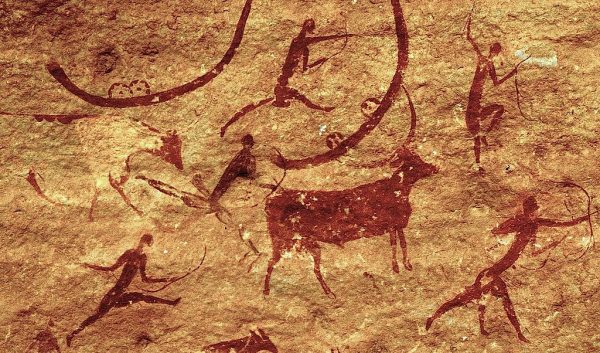
Archaeology
- Don’t Panic! How to Fight Fascism as an Archaeologistblacktrowelcollective.wordpress.com Don’t Panic! How to Fight Fascism as an Archaeologist
Hey, archaeologists! As archaeologists, we tend to be the doing sort, the busybodies shovelling and sorting, keeping and caring, custodians of time, places, people. It’s time to lean into that, to …

- 💎 Diamond Archaeology: Open venues for publishing, reviewing and curating archaeological researchdiamond.open-archaeo.info 💎 Diamond Archaeology
Open venues for publishing, reviewing and curating archaeological research
- Study uncovers earliest evidence of humans using fire to shape the landscape of Tasmaniaphys.org Study uncovers earliest evidence of humans using fire to shape the landscape of Tasmania
Some of the first human beings to arrive in Tasmania, over 41,000 years ago, used fire to shape and manage the landscape, about 2,000 years earlier than previously thought.
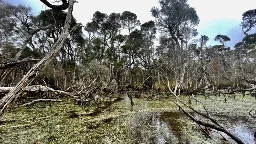
- Study confirms Egyptians drank hallucinogenic cocktails in ancient ritualsphys.org Study confirms Egyptians drank hallucinogenic cocktails in ancient rituals
A University of South Florida professor found the first-ever physical evidence of hallucinogens in an Egyptian mug, validating written records and centuries-old myths of ancient Egyptian rituals and practices. Through advanced chemical analyses, Davide Tanasi examined one of the world's few remainin...
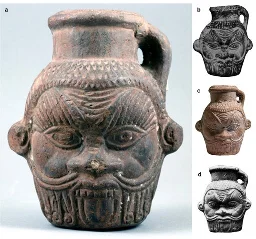
- Archeology And Genetics Team Up To Put A Much Earlier Date On South American Agriculturewww.sciencedaily.com Archeology And Genetics Team Up To Put A Much Earlier Date On South American Agriculture
Research by UMaine researcher Dan Sandweiss places cornmeal on the menu for native Americans much earlier than previously believed. Working with colleagues from Ithaca College and the Smithsonian's National Museum of Natural History, Sandweiss discovered evidence of cultivated corn in the Cotahuasi...

- 4,000-Year-Old Dilmun Temple Discovered on Failaka Island, Kuwaitarkeonews.net 4,000-Year-Old Dilmun Temple Discovered on Failaka Island, Kuwait
A joint Danish-Kuwaiti excavation team led by the Mosgard Museum has uncovered a 4,000-year-old Bronze Age temple linked to the...
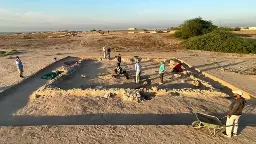
- Fingerprints on ancient terracotta figurines show men, women and children worked on figurinesphys.org Fingerprints on ancient terracotta figurines show men, women and children worked on figurines
A recent preliminary study by Ph.D. student Leonie Hoff of the University of Oxford, published in the Oxford Journal of Archaeology, provides insight into how ancient fingerprints left on terracotta figurines reveal the age and sex of their makers.
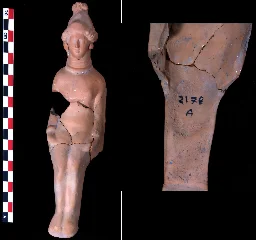
- 4,000-year-old town discovered hidden in Arabian oasisphys.org 4,000-year-old town discovered hidden in Arabian oasis
The discovery of a 4,000-year-old fortified town hidden in an oasis in modern-day Saudi Arabia reveals how life at the time was slowly changing from a nomadic to an urban existence, archaeologists said on Wednesday.
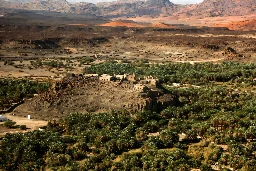
- Archaeologists unearth an ancient Middle Kingdom Egyptian tomb in Luxorapnews.com Archaeologists unearth an ancient Middle Kingdom Egyptian tomb in Luxor
Egyptian authorities say archeologists from Egypt and the United States unearthed an ancient tomb with 11 sealed burials near the famed city of Luxor.

- Brazil’s Farming Boom Is Erasing an Ancient Amazonian Civilizationwww.bloomberg.com Brazil’s Farming Boom Is Erasing an Ancient Amazonian Civilization
An underfunded agency is up against the agriculture industry’s unstoppable expansion of cash crops — and humanity’s heritage hangs in the balance.

- Huge number of witches’ marks found at Tudor house in ‘astonishing’ discovery | CNNedition.cnn.com Huge number of witches’ marks found at Tudor house in ‘astonishing’ discovery | CNN
A “staggering array” of witches’ marks have been discovered on the walls of a Tudor property in England.
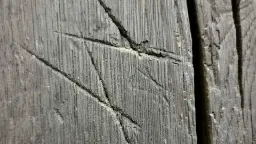
- A Lost Mayan City Has Been Found With Laser Mappingwww.wired.com A Lost Mayan City Has Been Found With Laser Mapping
Archaeologists have revealed an ancient lost Mayan city using advanced laser mapping technology, unearthing monumental structures such as pyramids and plazas. Named Valeriana, the city is believed to have been founded before 150 AD.

- 'Well-man' thrown from castle identified from 800-year-old Norse sagaphys.org 'Well-man' thrown from castle identified from 800-year-old Norse saga
A passage in the Norse "Sverris Saga," the 800-year-old story of King Sverre Sigurdsson, describes a military raid that occurred in AD 1197, during which a body was thrown into a well at Sverresborg Castle, outside Trondheim in central Norway, likely as an attempt to poison the main water source for...

- Unraveling a “Ghost” Neanderthal Lineagewww.sapiens.org Unraveling a “Ghost” Neanderthal Lineage
Remains in France found by archaeologists and geneticists suggest at least two lineages—not just one—of late Neanderthals in Europe.
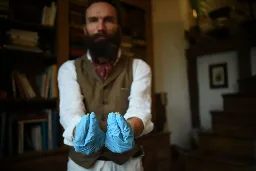
Remains in France found by archaeologists and geneticists suggest at least two lineages—not just one—of late Neanderthals in Europe.
- A.R.I. Archaeological Research Initiative by Murphy's Toast Gamesmurphystoastgames.itch.io A.R.I. Archaeological Research Initiative by Murphy's Toast Games
Solve past misteries using archaeology and deduction
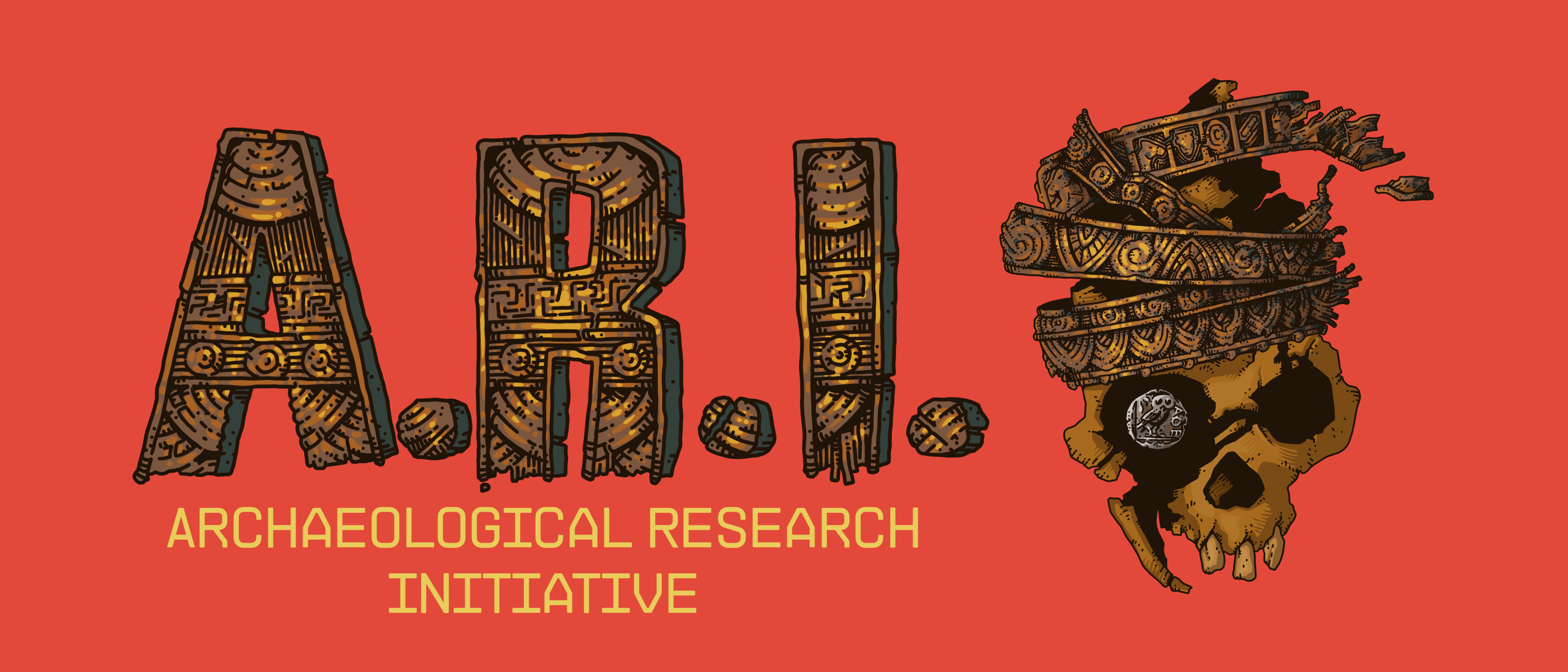
- Underwater caves yield clues that may help explain early expansion of Homo sapiens into Mediterranean islandsphys.org Underwater caves yield clues that may help explain early expansion of Homo sapiens into Mediterranean islands
Archaeological surveys led by scientists at Washington University in St. Louis suggest that coastal and underwater cave sites in southern Sicily contain important new clues about the path and fate of early human migrants to the island.
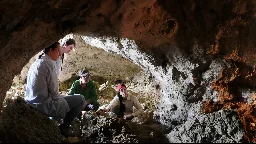
- British history is being destroyed before our eyes – and it has nothing to do with culture wars over statues | John Harriswww.theguardian.com British history is being destroyed before our eyes – and it has nothing to do with culture wars over statues | John Harris
Brutal cuts to council budgets have decimated museums and forced some to close. We’re at risk of losing our shared memory, writes Guardian columnist John Harris

- Ancient DNA from South Africa rock shelter reveals the same human population stayed there for 9,000 yearswww.livescience.com Ancient DNA from South Africa rock shelter reveals the same human population stayed there for 9,000 years
Ancient human genomes reconstructed from remains at a southern African rock shelter show remarkable genetic continuity over time.
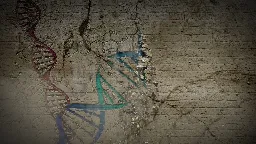
- Medieval walrus ivory may reveal trade between Norse and Indigenous Americans hundreds of years before Columbus, study findswww.livescience.com Medieval walrus ivory may reveal trade between Norse and Indigenous Americans hundreds of years before Columbus, study finds
The Thule Inuit people and Norse both hunted walrus in the High Arctic in the 13th century, according to a new study.

- Divers in Mexico's Underwater Caves Get a Glimpse of Rarely Seen Artifacts, Fossils and Human Remainswww.smithsonianmag.com Divers in Mexico's Underwater Caves Get a Glimpse of Rarely Seen Artifacts, Fossils and Human Remains
Cenotes in the Yucatán Peninsula are time capsules preserving remnants of Maya culture and fossils of extinct megafauna
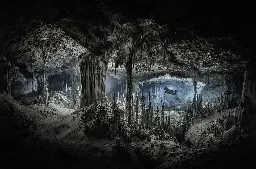
- The Dawn of Everything inspiration for Megalopolis filmwww.ucl.ac.uk The Dawn of Everything inspiration for Megalopolis film
The Dawn of Everything, co-authored by David Wengrow (UCL Institute of Archaeology), has been named as one of the inspirations for Francis Ford Coppola's new film.

- Franklin expedition captain who died in 1848 was cannibalized by survivorsarstechnica.com Franklin expedition captain who died in 1848 was cannibalized by survivors
Scientists matched DNA of living descendent to Capt. James Fitzjames of the HMS Erebus.

Scientists at the University of Waterloo have identified one of the doomed crew members of Captain Sir John S. Franklin's 1846 Arctic expedition to cross the Northwest Passage. According to a recent paper published in the Journal of Archaeological Science, DNA analysis revealed that a tooth recovered from a mandible at one of the relevant archaeological sites was that of Captain James Fitzjames of the HMS Erebus. His remains show clear signs of cannibalism, confirming early Inuit reports of desperate crew members resorting to eating their dead.
"Concrete evidence of James Fitzjames as the first identified victim of cannibalism lifts the veil of anonymity that for 170 years spared the families of individual members of the 1845 Franklin expedition from the horrific reality of what might have befallen the body of their ancestor," the authors wrote in their paper. "But it also shows that neither rank nor status was the governing principle in the final desperate days of the expedition as they strove to save themselves."
- 50 Viking Age burials discovered in Denmark, including a woman in a rare 'Viking wagon'www.livescience.com 50 Viking Age burials discovered in Denmark, including a woman in a rare 'Viking wagon'
Finding a Viking Age burial ground of this size is rare, in part because Scandinavian soil doesn't preserve skeletons well.
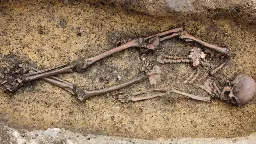
- Archaeologists use AI to discover 303 unknown geoglyphs near Nazca Lineswww.theguardian.com Archaeologists use AI to discover 303 unknown geoglyphs near Nazca Lines
Newly discovered figures dating back to 200BCE nearly double the number of known geoglyphs at enigmatic site
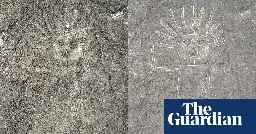
The use of AI combined with low-flying drones revolutionised the speed and rate at which the geoglyphs were discovered, according to a research paper published this week in the Proceedings of the National Academy of Sciences (PNAS).
The paper said while it “took nearly a century to discover a total of 430 figurative Nazca geoglyphs”, using an AI system covering the entire Nazca region it “took just six months to discover 303 new figurative geoglyphs”.
- 'We were anything but primitive': How Indigenous-led archaeology is challenging colonial preconceptions
cross-posted from: https://hexbear.net/post/3519681
> >"It was different because there wasn't a lot of education [about] our people," she said. "So I only learned my history through my family members." > > >Years later, Tenasco is learning much more about her culture and her ancestors at a different kind of school — a federally-funded Indigenous archeological field school called Anishinabe Odjibikan. > > >The school brings together young members of the Algonquin communities of Kitigan Zibi in Quebec and Pikwakanagan in Ontario to dig up, clean and sort items used by their ancestors thousands of years ago. > > >Tenasco and her fellow Anishinabe Odjibikan participants learn how to document layers of earth and rocks, identify materials and determine if they're local to the area, use surveyor's tools and clean and reassemble pottery pieces found at a dig site. > > >Anishinabe Odjibikan is part of a growing trend in archaeology of involving the Indigenous peoples whose lands are being excavated — with the work either being led by Indigenous people, done collaboratively or carried out with their consent. > > >According to Cree/Métis archaeologist Paulette Steeves, the last century of archaeology has invalidated the pre-contact history of the Americas — and the people who lived there for thousands of years. > > Full Article
- Researchers document Russian destruction of Ukrainian archaeological sitesphys.org Researchers document Russian destruction of Ukrainian archaeological sites
As Russian missile strikes and heavy assaults by ground troops pace deadly attacks on Ukraine, a new report by University of Virginia researchers reveals another destructive facet of Russia's invasion.
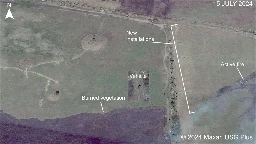
As Russian missile strikes and heavy assaults by ground troops pace deadly attacks on Ukraine, a new report by University of Virginia researchers reveals another destructive facet of Russia's invasion.
Using commercial satellite imagery and other open-source information, associate professor of sociology Fiona Greenland and other researchers with UVA's Cultural Resilience Informatics and Analysis, or CURIA, Lab determined that multiple ancient Ukrainian burial mounds have been damaged in two locations currently occupied by Russian troops—a potential violation of international law.
These historically significant burial sites, called "kurgans," were constructed by the ancient peoples of the Ukrainian steppe. The mounds, up to 65 feet tall, contain human remains and artifacts dating back as far as 3000 B.C.E.
- French dig team gets 200-year-old note from archaeologistwww.bbc.com French dig team gets 200-year-old note from archaeologist
A team of volunteer archaeologists in Normandy has had a surprise communication from the past.
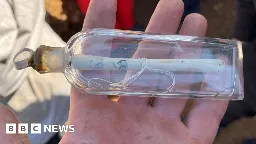
A team of student volunteers on an archaeological dig in northern France has had a surprise communication from the past.
- The First Horse Domestication Was Later Than We Thoughtwww.atlasobscura.com The First Horse Domestication Was Later Than We Thought
Where and when did horses become our helpers? Science has some new and surprising answers.

- Old Easter Island genomes show no sign of a population collapsearstechnica.com Old Easter Island genomes show no sign of a population collapse
Native American DNA in the genomes dates to roughly when Rapa Nui was settled.
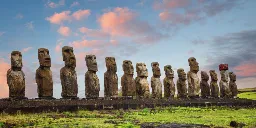
Every day, my distaste for Jared Diamond ages like a fine wine.
- Clovis people used Great Lakes camp annually about 13,000 years ago, researchers confirmphys.org Clovis people used Great Lakes camp annually about 13,000 years ago, researchers confirm
The earliest humans to settle the Great Lakes region likely returned to a campsite in southwest Michigan for several years in a row, according to a University of Michigan study.

The earliest humans to settle the Great Lakes region likely returned to a campsite in southwest Michigan for several years in a row, according to a University of Michigan study.
Until recently, there was no evidence that people from the Clovis period had settled the Great Lakes region. The Clovis people appeared in North America about 13,000 years ago, during the geologic epoch called the Pleistocene. During the Pleistocene, sheets of glaciers covered much of the world, including Michigan, making the land inhospitable for human settlers. But a 2021 U-M study confirmed that Clovis people built a camp, now called the Belson site, in southwest Michigan.
- 'Sensational discovery' of 2,000-year-old Roman military camp found hidden in the Swiss Alpswww.livescience.com 'Sensational discovery' of 2,000-year-old Roman military camp found hidden in the Swiss Alps
Researchers used lasers to find the Roman military camp, which was "strategically" located overlooking a battleground.

- Analysis of Greek prehistoric combat in full body armour based on physiological principles: A series of studies using thematic analysis, human experiments, and numerical simulationsjournals.plos.org Analysis of Greek prehistoric combat in full body armour based on physiological principles: A series of studies using thematic analysis, human experiments, and numerical simulations
One of the oldest complete suits of European armour was discovered in 1960 near the village of Dendra, in Southern Greece, but it remained unknown whether this armour was suitable for extended use in battle or was purely ceremonial. This had limited our understanding of the ancient Greek–Late Bronze...

- Bison Licking Insect Bite: A 14,000-year-old lifelike figure carved from a weaponwww.livescience.com Bison Licking Insect Bite: A 14,000-year-old lifelike figure carved from a weapon
The small carving was made 14,000 years ago by a group of hunters.
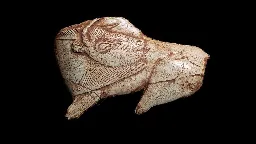
This prehistoric carving, discovered inside a cave in France, depicts a steppe wisent (Bison priscus), a now-extinct species of bison. It was crafted from a piece of reindeer antler that was previously used as a spear thrower for hunting, according to the Bradshaw Foundation.
Despite its small size — roughly 4 inches (10.5 centimeters) wide — the figurine contains a wealth of meticulous details, including finely carved individual hairs across the animal's body and a pair of horns jutting from its head, giving the piece a lifelike quality.
- Stone Age builders had engineering savvy, finds study of 6000-year-old monumentwww.nature.com Stone Age builders had engineering savvy, finds study of 6000-year-old monument
A survey of the Dolmen of Menga suggests that the stone tomb’s Neolithic builders had an understanding of science.
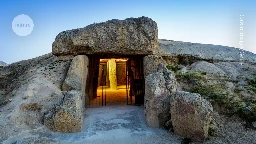
The Neolithic farmers and herders who built a massive stone chamber in southern Spain nearly 6,000 years ago possessed a good rudimentary grasp of physics, geometry, geology and architectural principles, finds a detailed study of the site.
Using data from a high-resolution laser scan, as well as unpublished photos and diagrams from earlier excavations, archaeologists pieced together a probable construction process for the monument known as the Dolmen of Menga. Their findings, published on 23 August in Science Advances1, reveal new insights into the structure and its Neolithic builders’ technical abilities.
- Archaeologists find 4281-foot-long secret tunnel beneath ancient Egyptian templel.smartnews.com Archaeologists find 4281-foot-long secret tunnel beneath ancient Egyptian temple (Good)
Archaeologists find 4281-foot-long secret tunnel beneath ancient Egyptian temple For more than two de...

- To kill mammoths in the Ice Age, people used planted pikes, not throwing spears, researchers sayphys.org To kill mammoths in the Ice Age, people used planted pikes, not throwing spears, researchers say
How did early humans use sharpened rocks to bring down megafauna 13,000 years ago? Did they throw spears tipped with carefully crafted, razor-sharp rocks called Clovis points? Did they surround and jab mammoths and mastodons? Or did they scavenge wounded animals, using Clovis points as a versatile t...
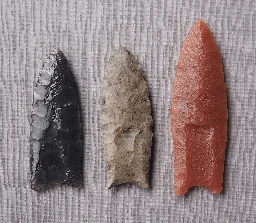
How did early humans use sharpened rocks to bring down megafauna 13,000 years ago? Did they throw spears tipped with carefully crafted, razor-sharp rocks called Clovis points? Did they surround and jab mammoths and mastodons? Or did they scavenge wounded animals, using Clovis points as a versatile tool to harvest meat and bones for food and supplies?
UC Berkeley archaeologists say the answer might be none of the above.
Instead, researchers say humans may have braced the butt of their pointed spears against the ground and angled the weapon upward in a way that would impale a charging animal. The force would have driven the spear deeper into the predator's body, unleashing a more damaging blow than even the strongest prehistoric hunters would have been capable of on their own.
- Ice Age Europeans: Climate change caused a drastic decline in hunter–gatherers, fossil study showsphys.org Ice Age Europeans: Climate change caused a drastic decline in hunter–gatherers, fossil study shows
A large-scale study of fossil human teeth from Ice Age Europe shows that climate change significantly influenced the demography of prehistoric humans.
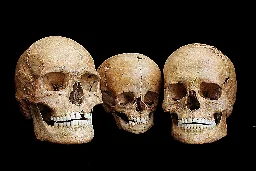
A large-scale study of fossil human teeth from Ice Age Europe shows that climate change significantly influenced the demography of prehistoric humans.
Using the largest dataset of human fossils from Ice Age Europe to date, an international research team shows how prehistoric hunter–gatherers coped with climate change in the period between 47,000 and 7,000 years ago.
Population sizes declined sharply during the coldest period, and in the West, Ice Age Europeans even faced extinction, according to the study published August 16 in the journal Science Advances.
